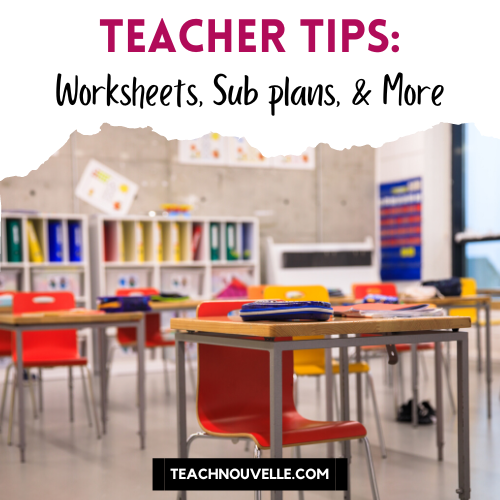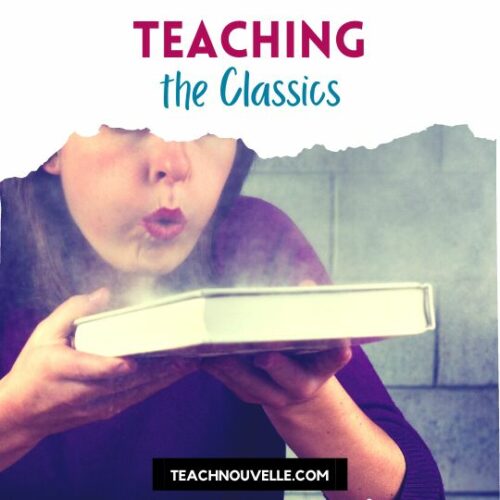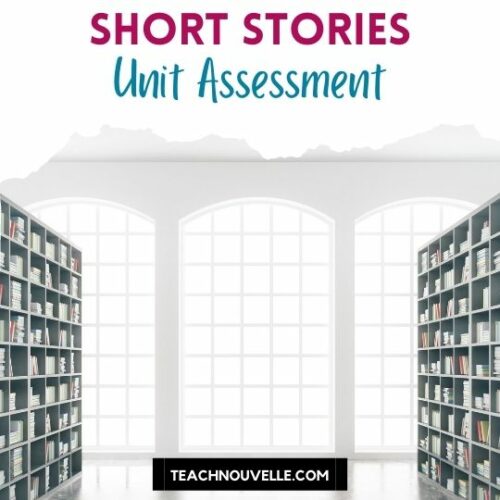Are you making your own worksheets this school year? Are you starting at a new school site or entirely new to the teaching profession? Are you feeling the tickle in your throat and planning your sub plans just in case?
No matter what brought you here, we’ve got tons of helpful easy-to-implement advice on color coding your classroom, succeeding as the new teacher, having emergency sub plans, and making your own worksheets (that are cute, too)!
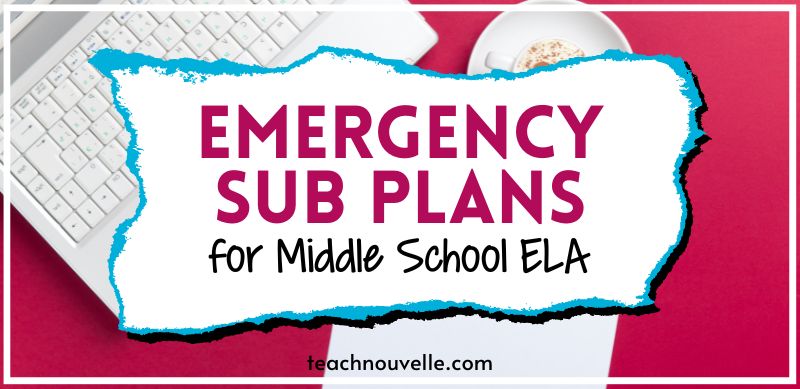
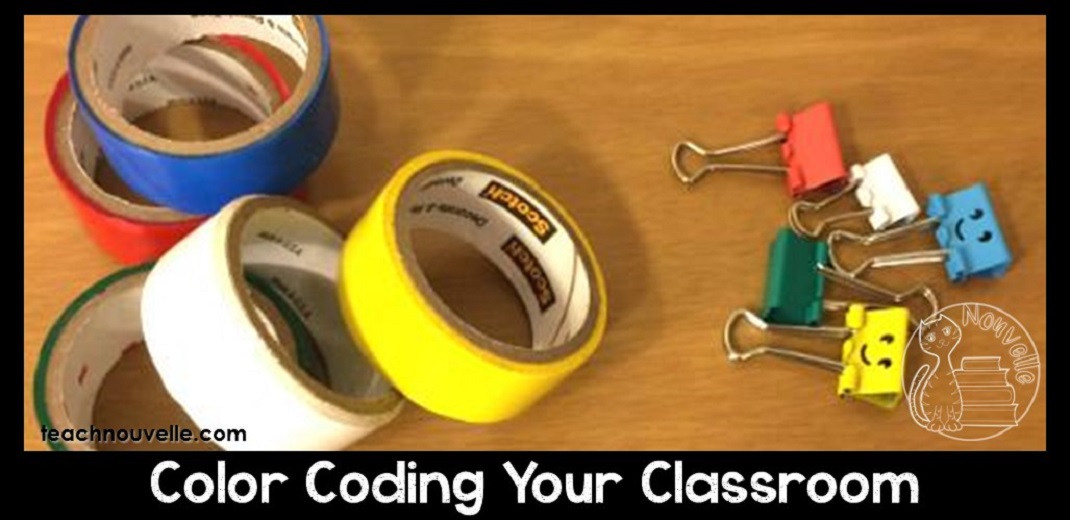
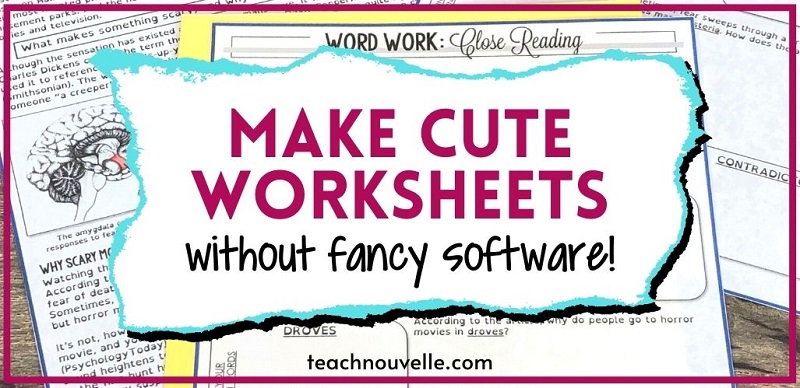
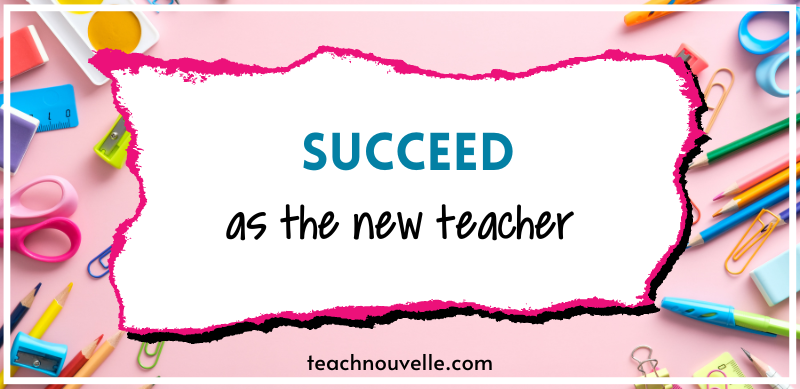
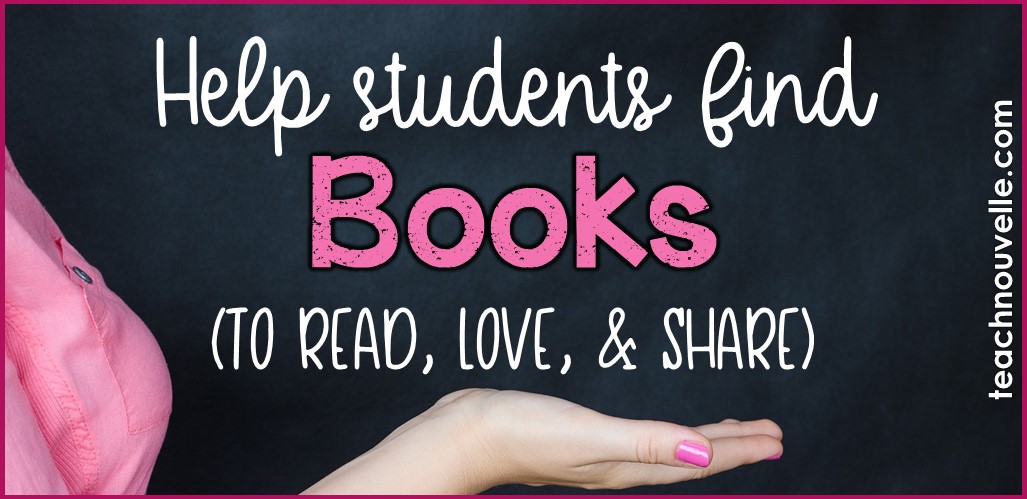
Have you ever wondered how to make cute worksheets like the ones you find on TeachersPayTeachers?
Even if you don’t want to know how to be a TpT seller, you can still make your own worksheets for your classroom.
Here are 4 easy-to-follow tips:
Don’t design worksheets using Microsoft Word
Most of the worksheets that you find on TeachersPayTeachers are designed in Microsoft PowerPoint, NOT Microsoft Word.
Making your own worksheets in PowerPoint is much easier because you can fully control where on the page your images and text appear.
I’ve got some Beginner PowerPoint Tutorials for making your own worksheets here.
Use font pairings
Once you download a fun font or two, it can be tempting to go totally overboard with them. However, your worksheets will look great if you choose three fonts and stick with them.
This will also help your worksheets stay readable for your students.
I generally use:
– one font for the title,
– one font for subtitles,
– and one font for the body text.
Font pairings are fonts that look great together. Kimberly Geswein is my favorite font designer, and she has put together a Free Font Pairing Guide to help you make cute worksheets for your classroom.
Use clipart
If clipart makes you happy, use it! You can find tons of clipart on TpT. One of my favorite types of clipart is stuff like Doodle Arrows and Doodle Dudes.
These are great for drawing attention to items for middle and high schoolers. They don’t feel “cutesy” to students, but they still keep your worksheets interesting.
Use a page border
Using a page border is a simple way to boost the professional look of your resources.
This can be a simple rectangle made with the Shape Tool in PowerPoint or you can download clipart borders from TpT.
Either way, this is a small step you can take to elevate your style.
Back to School can be a stressful time, but with the right tips, resources, and mindset, we can all have an amazing start to the school year! A huge time-saving idea is color coding your classroom.
If you’re like me, it can take a while to learn every student’s name and which period they’re in, so lost notebooks and papers at the beginning of the year can be a pain.
I’m particularly concerned with helping my students learn to keep track of their Interactive Notebooks, and this can be a challenge when everyone buys the same brand or two of notebooks.
Even if I urge them to personalize them, it may be a week or two before they finish.
My biggest hint? Color code everything.
I give each period/block a color, color coding everything in my 9th-grade classroom. Each student gets a piece of colored tape to put on the spine of their Interactive Notebook, which helps them quickly sort them on the shelf.
My model ISN is also color-coded for each class (blue for regular, yellow for Honors, green for enrichment, etc.).
I color code shelves for handouts and textbooks, making it super easy to eventually train students to get their own supplies.
This back-to-school tip will save your sanity this year. What can you color-code in your classroom?
Whether you are a first-year teacher, a military spouse who’s always on the move, or a veteran teacher switching districts, there are times when it’s necessary to be a new teacher in a building.
Here are some tips for new teachers that I’ve learned after five years of teaching in as many schools.
Learn Names
As a new teacher, you’ll have a lot of names to learn, but sometimes you’ll only get to hear someone’s name once before you’re expected to know it.
During my school tour, I carry around a little notepad and write notes surreptitiously – Maggie, Registrar, cute earrings! – and then study them in the evening.
I also retrace my steps the following day and try to say hi to as many people as possible, using their names.
If I mess up at this point, they’ll correct me… better that than not knowing their names two months in!
Make a Friend
It can be difficult to make friends as a new teacher in a school. I’m an introvert, and so it’s not my inclination to strike up conversations with people.
Still, friends are important to your well-being, and it’s even more beneficial if you can find like-minded people to spend time with.
Here’s my big secret.
Go where you want to hang out.
I mean it. Are you an extrovert who enjoys telling elaborate stories for an audience? Perhaps the teacher’s lounge is the right place for you to find friends.
Are you someone who likes to relax during your lunch time? Look around and see if any of the teachers in your school hide away and watch Netflix for their 20-minute break.
I like to leave at 3:30 or whenever my contract time is finished, but I’m a morning person.
I scouted out some teachers who would arrive for a cup of coffee together in the back of the library before school, and those are the people I click with most.
Ask Questions
I learned to ask questions the hard way. At my last job, the principal gave me a huge manual about how to be a new teacher in the school, and I thought that was it.
I was wrong.
It turns out that every school has traditions, procedures, and a culture that many teachers will assume is obvious.
If you want to blend in as the new teacher, assume nothing and ask very thorough questions.
Keep a Positive Attitude
It’s often difficult for a new teacher to keep a positive attitude, but it’s so important. Your friends are going to help you, and your dogged preparedness will certainly help, but things will inevitably pop up.
Also, you’ll hear veteran teachers of the school complain, and you’ll think that you should play along.
You should not.
Veteran teachers complain about a school in the same way that siblings complain about each other or parents tease their children.
You are the stranger, and you just don’t have the same privileges. Stay positive, be a good listener, and keep the negative thoughts for your reflective journal.
That being said, if you have a real struggle, you need to write it down and present it to a person who can help you.
Try to identify a first line of attack before your principal, since s/he is very busy. Once you identify this person, don’t talk to everyone else about it, no matter how good commiseration may feel.
Schools are small places, and a community can turn on a new member quickly.
Need a digital lesson for a snow day? Fun emergency middle school sub plans? Or an enrichment session to review basic skills?
This independent writing activity bundle has got you (and your students) covered!
What Each Activity Includes
I want to ensure my students are using classroom time efficiently, even if I am buried in too many tissues to create middle school sub plans myself.
Solution? Provide them with engaging activities they want to do.
With each of the activities in this resource, students have the opportunity to tap into their interests: TV episodes, songs, and other media literacy.
Additionally, students become an expert on their given task in order to create and design a polished product at the end.
TV Episode Review
My students love nothing more than when they take on a specific role. Detective? Character? Performer? With this activity, students will BECOME a TV critic by conducting an episode review.
Students will…
- Engage in pre-writing activities
- Identify and analyze the plot structure
- Identify and analyze type (s) of conflict
- Identify and analyze characters
- Write a summary
- Design a polished review
The activity suggests a few TV episodes, but you can find more here and here.
Song Portfolio
Using music in your curriculum boosts student engagement in the classroom. This song portfolio activity is certain to do so!
Students will…
- Engage in pre-writing activities
- Analyze theme in various songs
- Determine and analyze the speaker’s attitude (s)
- Analyze symbols and/or images
- Analyze figurative language
- Design a polished song portfolio
You will find 3 song recommendations within the resource, but you can find more selections here and here!
How-to Article
Did you know you can implement procedural writing activities that help build a healthy classroom community? In the age of aspiring vloggers and bloggers, students become an expert and tap into their interests to write a tutorial.
Students will…
- Engage in pre-writing activities
- Analyze a provided tutorial exemplar
- Analyze two tutorials of their choosing
- Analyze the speaker
- Develop a draft of their tutorial (through scaffolded steps)
- Design a polished how-to tutorial article
Need more procedural writing activities? Follow up using this lesson or these low-prep media literacy activities.
One of my favorite parts of talking about books with students is helping them figure out what to read next. Readers know the power of knowing their next book, and we can help students get there with some tools in our own reader toolkit.
These tools can help you find great book recommendations for teens.
1. Goodreads
If you’re a reader, you’ve probably heard of Goodreads. It’s a behemoth review site and has a large base of contributors. It also populates a section called “Readers Also Enjoyed”.
I like to browse this section during my Book Conferences so that I can talk about possibilities with students on the spot.
2. Instagram
Instagram is another great place to find book recommendations. I check hashtags like #classroomlibrary and #YAbooks to see what IGers recommend.
I also follow some amazing teacher readers on IG, and love the book talks they do in Stories.
I know that my fellow 8th & 9th grade teachers are going to recommend the best stuff for my students, so I always tune in to their advice.
3. NetGalley
NetGalley is a website that will give you, teacher readers, free Advance Reader Copies. Publishers will give you free ARCs ahead of publication in exchange for a review from you.
I really love this opportunity to see what’s ahead for my teen readers, and also read some diverse offerings.
Through NetGalley, I was able to read early copies of Everything, Everything, The Disappearances, and Underwater.
4. TV/Netflix
I watch a lot of TV folks, and I mean really watch. We watch TV (and Netflix, Hulu, and HBO) for the stories, and we analyze the development of genre, plot, characters, and conflict.
I’ve talked before about TV episodes for the ELA classroom, but you can also use it to help inform your book recommendations.
What genres are your students watching? What can they articulate liking about certain shows? They can probably list twenty shows they’ve enjoyed, even if they can only name one or two books.
5. Other students
The best resource for making book recommendations for teens, however, is other teens.
Develop a culture of recommendations in your classroom. When students have Book Conferences with you or do a Book Talk for the class, help them learn to articulate what others may like about the book.
Eventually, your readers will be able to name specific classmates who might enjoy the same book.
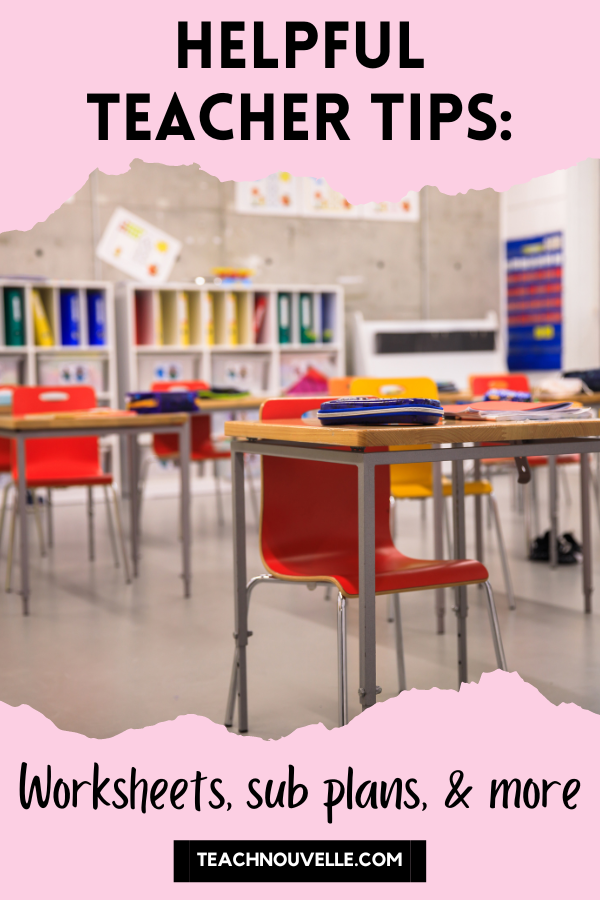
Closing remarks
As teachers, we tend to be hardest on ourselves, so remember to make your back-to-school goals reasonable and resourceful!
If you REALLY want cute worksheets this year, try making ONE cute worksheet per unit.
If you REALLY want a better organizational system this school year, start by color coding the most essential item(s) in your classroom.
An all-or-nothing approach will only lead to burnout and that serves no one.
HAPPY SCHOOL YEAR!

